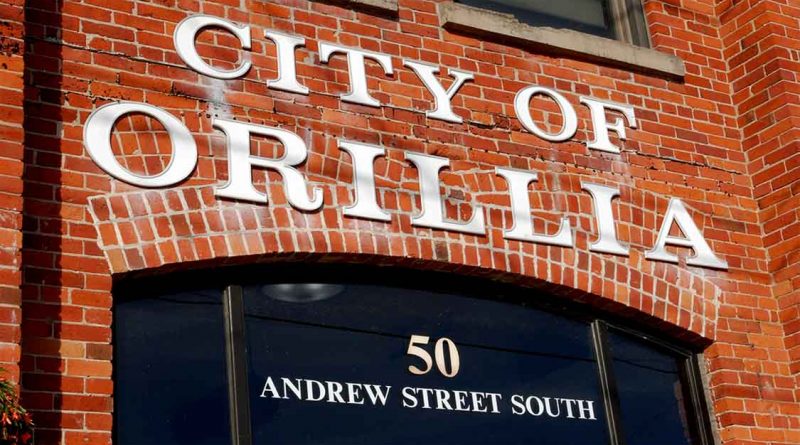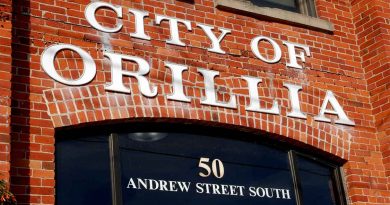Council Preview
By John Swartz
Orillia council’s committee meeting at 4 p.m. is preceded by a closed session to deal with a matter left over from that last closed session three weeks ago.
Previously, the item to discuss a staff retirement was paired with an item relating to the waste water treatment operation. Council budgeted an hour and fifteen minutes for both items. The discussion on the legal issue ran so long the public committee meeting was significantly delayed until shortly before 6 p.m. and the retirement item bumped to this week.
With the legal issue, usually there are few details about closed session items, but much can be surmised from the description. A statement of claim indicates one party is suing over the construction of the wastewater tertiary treatment center. The project itself was forced by the province on Orillia to remove a minuscule amount of phosphorus (as compared to runoff from farms) remaining in treated water before release into Lake Simcoe.
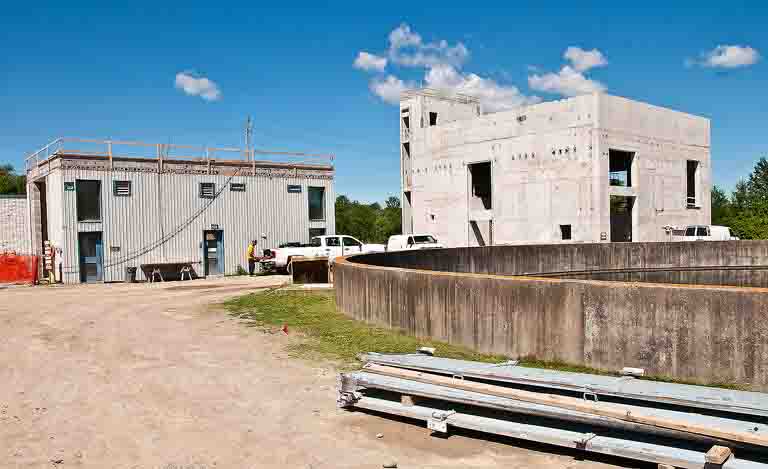
Wastewater tertiary treatment center, June 2018
The construction project, initially at a $15 million budget, ran into trouble below ground, there were other issues as well, and completion was delayed. In the past when items relating to statements of claim have been discussed and the City is being sued the other party is named in the description. In this case the other party is not named suggesting this time the City is making the claim. At the following regular council meeting held October 5 the resolution coming from the closed session only indicate council chose an option to proceed, but with no details of what the option is.
Public Agenda
The first item of the committee meeting is the consent agenda, which has three items, with straight forward items designed to pass without discussion. All involve allocating money, one relating to the pending sale of 2 Hunter Valley Road, awarding a $268,445 contract for snow clearing, and increasing the budget for HVAC work on Swanmore Hall by $10,000 to $30,000 and awarding the contract ($27,551) to Simcoe Benchmark Mechanical.
The marquee item of the meeting is the long awaited Waterfront Parkland Design Study. The 182 page report reveals the consultant’s, Studio TLA, findings On first investigation the recommendations appear to acceptable because alterations of the three waterfront parks (Veterans, Centennial and Couchiching Beach) find ways to add components (skating trail, creating a knoll in front of the Aqua Theatre – called Lookout in the report – splash pad, etc.) do not greatly affecting the feel of the parks as we know them now.
Significantly, the consultants went against the grain of what was perceived to be a mood to remove the boat launch, the skateboard park and parking in general by listening to what people told them at public meetings and in direct consultation with various groups.
Specifically, people overwhelmingly said the boat launch is an asset that should not be relocated to another place. There was some talk of removing the skateboard park to somewhere else in the City, but feedback also clearly stated the waterfront parks should be for everybody, not just those over a certain age, and the skateboard park should be left alone. Well, it’s not being left alone, the consultant recommends refurbishing and expanding it.
On parking, four preliminary proposals were made public in 2017 which removed virtually all parking from the park system. In the final iteration brought to council all parking was back in after significant feedback on the matter. In this study parking is reduced in some areas like the boat launch lot and at the Port of Orillia, but the lot between Canice and Jarvis Streets is proposed to be expanded from 134 spaces to 204.
Similarly parking on Terry Fox Circle will be removed (35 spaces, and relocated close by to a lot for 44 cars. Additionally while parking is more than halved at the Port of Orillia, parking on the newly rebuilt Centennial Drive would be introduced with a net effect of more parking being available.
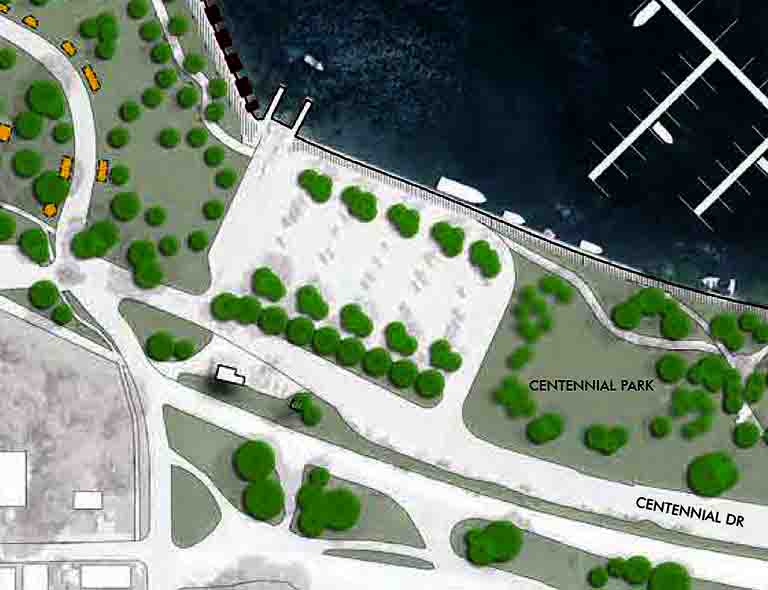
If there is an issue to take, it’s with the boat launch parking lot. Currently it can accommodate 108 cars. Because trailer parking on the former rail bead will disappear with development, the consultant is proposing reconfiguring the space, which will be approximately the same size as exists now, to allow 17 spaces for trailers earmarked for use by Orillia residents only. The design leaves only 26 car spaces configured such only half would be able to view the lake.
It can be argued flipping the orientation of parking reduces the use and does not account for the current heavy use of the lot by seniors with mobility issues. If, for example, the configuration was retained, 50% of the spaces could be converted back to the original design for trailers and allow for 27 trailers and leave 54 car spaces – all with lake views.
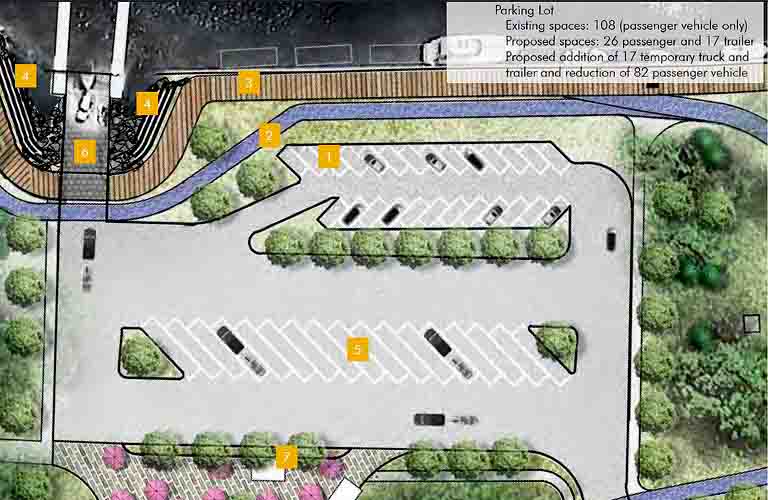
On the whole, the plan is remarkable for managing to fit new facilities, many of which some residents have been advocating for several years (kayak rentals, skate trail, etc.) without disrupting what residents are accustom to. Some people have also expressed interest in utilizing the Dr. Seymour Conservatory in a better way, and the consultants recommend starting from scratch and building a larger facility with more access to the public while retaining the current use as a greenhouse operation. Advocates for turning Terry Fox Circle into a pedestrian only use get their wish, while recognizing there are people who still want to park close by to the facilities they use (the beach, trial access).
There is no price tag for all the changes, though adding estimates for major components suggest it will be more than $15 million. The consultants provide a timeline that logically splits the whole into smaller projects so as not to disrupt most park use all at once and work in conjunction with each piece as re-built. For example the lead piece for council to consider is creating a food plaza surrounding French’s stand. Centennial Drive will be relocated to the west and the stand becomes part of the park after road construction. It makes sense to do something there first following, or during, road construction.
If the motion is passed as presented, council will authorize staff to create a timeline over a ten year capital and implementation plan, which will be presented to council at the 2021 budget meetings.
Practice is to make studies available online following presentation to council. When that happens SUNonline/Orillia will provide a link.
The Rest Of The Agenda
The results of a competition to create some art for a new garden configuration at Tudhope Park will be released. Robert Doan had the winning design called Papillio Planta. The cost of the art project is $5,000.

Three issues involving cars are on the agenda. A request for a crosswalk on Brant Street connecting Brant Street Park to Lions Oval Public School will cost $20,000 to install and would in turn create other traffic issues. There already is a plan to install sidewalks on the north side of Brant and there are crosswalks nearby at West and Patrick Streets.
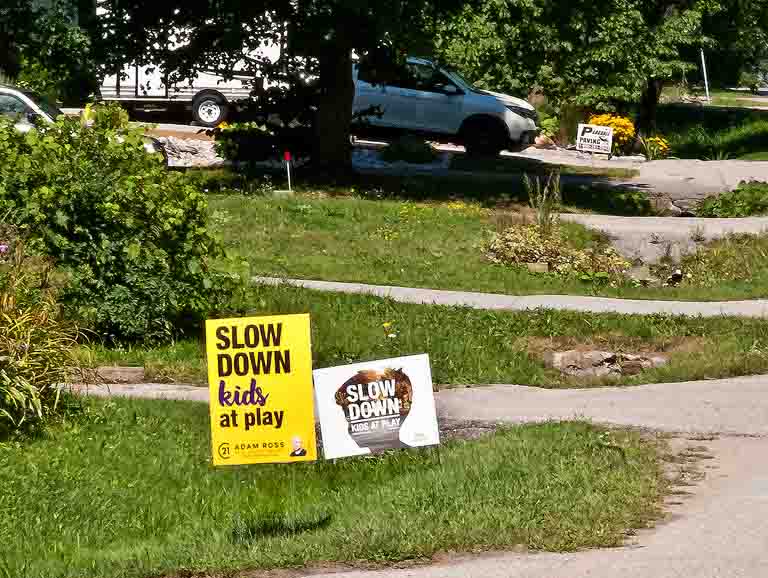
Recently people have been putting up children at play signs on their lawns in many neighbourhoods. The problem is some residents are putting the signs on boulevards, which is not permitted, instead of on their lawns – and there are several different designs is use around the City. Staff say studies show drivers do not pay attention to them because they don’t look like traffic signs, and because there are so many they become visual clutter. Staff are not recommending any change to the sign by-law to permit the signs being placed on boulevards.
Staff are recommending council approve $24,000 for installing center line road signs on Emperor, Skyline and Collegiate Drives. Councillor Fallis brought the issue to council last year. The matter was before council in April and staff did not recommend proceeding, however council asked for coast estimates with the intention of installing the signs. Some by-laws will need to be amended and parking restrictions on Emperor will be placed in order for the signs to be installed.
Council will also get a report relating to changes in the Development Charges Act which freezes charges for institutional and non-profit development, and allows for installment payments over 5 or 20 years depending on the type of development. Development charges were previously due in full at the time building permits are issued.
The recommendation is to apply interest at Bank of Canada prime rates plus 2%, and a $1,000 application fee be implemented.
![]()



This council meeting is a video conference and the chamber is closed to the public. The public can watch it live, on Rogers TV.
(Photos by Swartz – SUNonline/Orillia)

